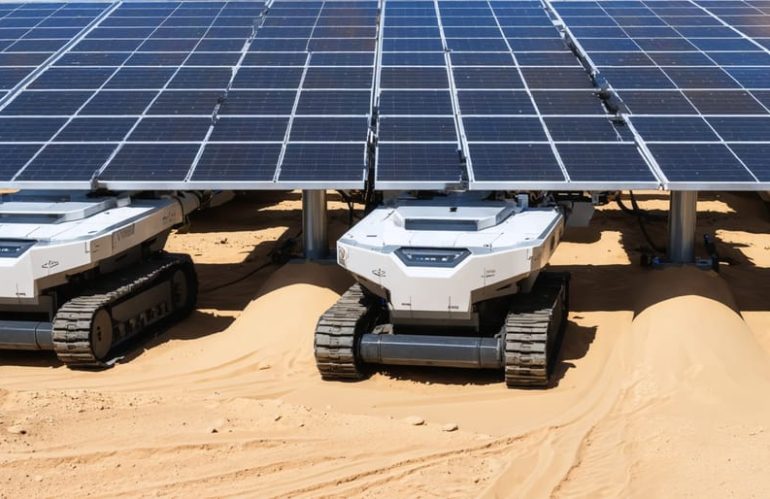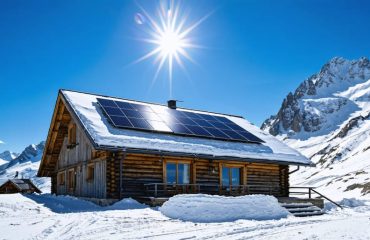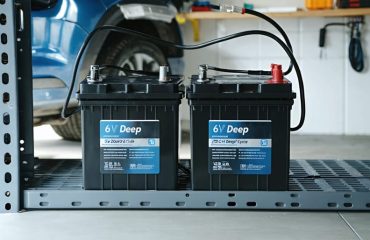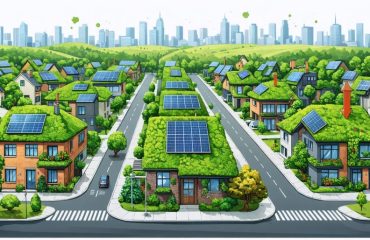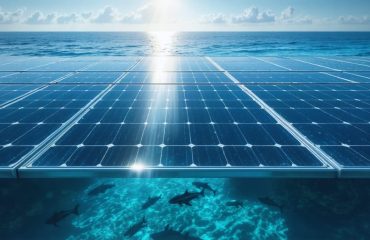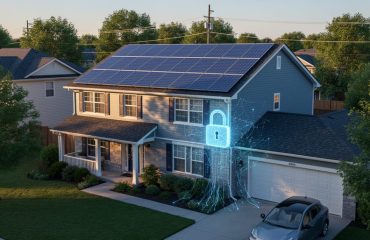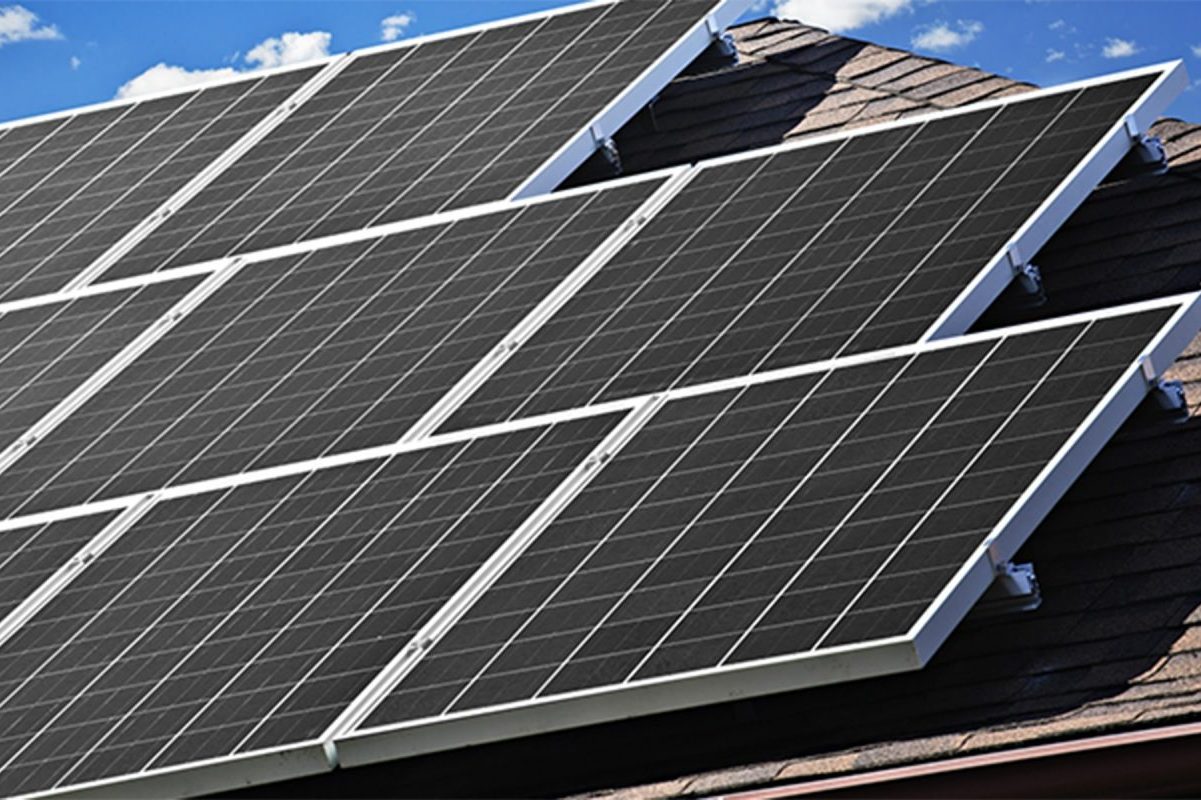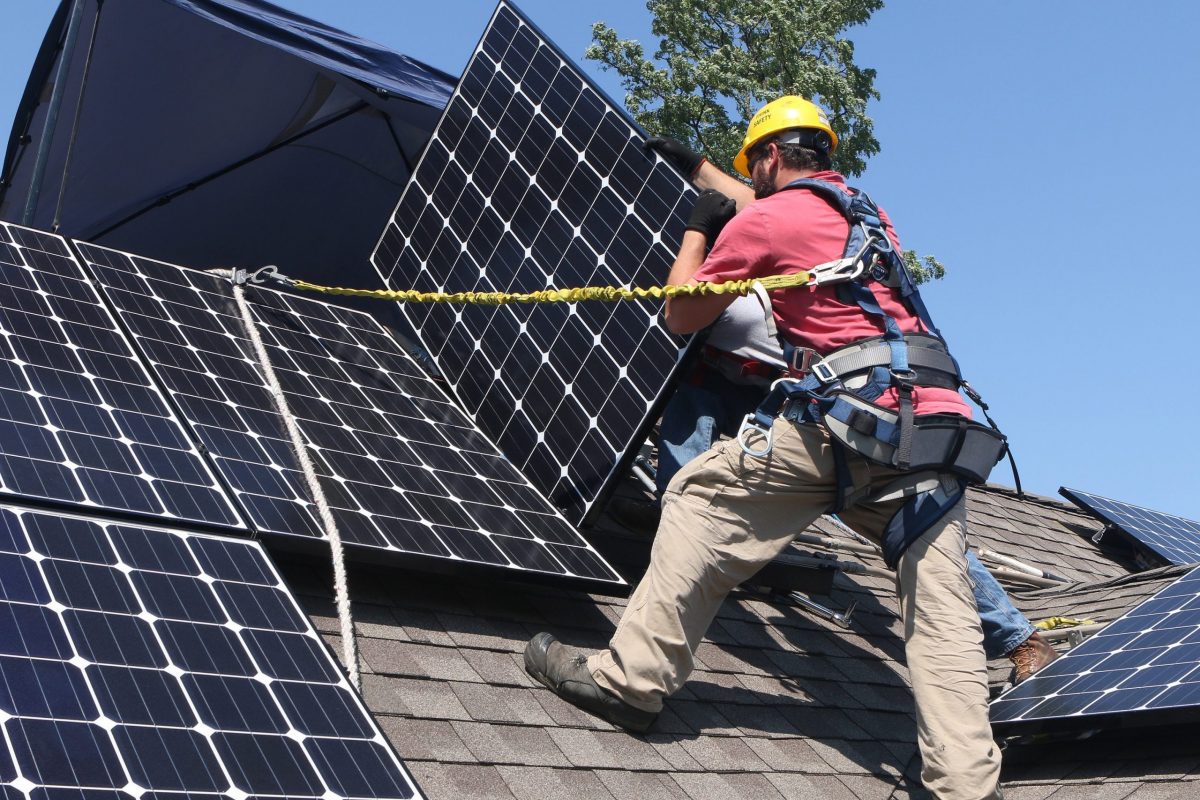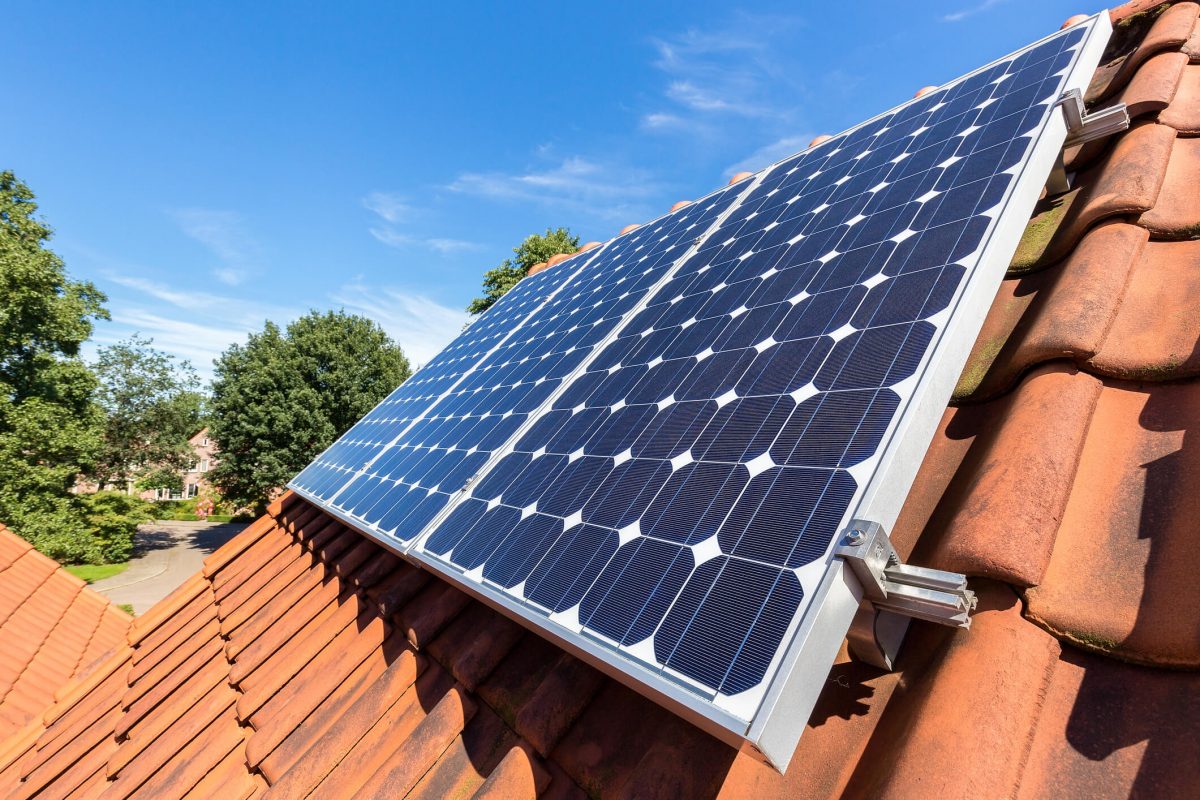Transform your arid environment into a solar power powerhouse by implementing desert-optimized panel mounting systems, specialized dust-resistance coatings, and intelligent tracking systems that maximize energy production even in harsh environmental conditions. Advanced thermal management solutions, including active cooling systems and high-temperature-rated components, ensure optimal performance when temperatures soar past 110°F. Modern desert solar installations now achieve up to 30% greater efficiency than standard systems through innovative sun-tracking technology and specialized panel treatments that combat dust accumulation. These proven solutions enable homeowners in arid regions to harness the abundant desert sunlight while protecting their investment from extreme heat, sand, and intense UV exposure. Cutting-edge monitoring systems provide real-time performance data, allowing for immediate adjustments to maintain peak efficiency throughout the year.
Why Traditional Solar Setups Struggle in Desert Conditions
Temperature Impact on Solar Efficiency
While solar panels thrive on sunlight, extremely high temperatures can actually reduce their efficiency. When panels heat up beyond their optimal operating temperature (typically around 77°F or 25°C), their power output begins to decrease by about 0.3-0.5% for every degree increase in temperature.
This efficiency loss occurs because heat affects the electrical properties of the solar cells, making it harder for them to convert sunlight into electricity. However, this doesn’t mean solar panels aren’t effective in hot climates. Modern panels are designed with heat-resistant materials and cooling features that help maintain performance even in scorching conditions.
The good news is that the abundant sunshine in arid regions typically more than makes up for any heat-related efficiency losses. Plus, there are several effective solutions to manage temperature impact, such as elevated mounting systems that allow better airflow and light-colored materials that reflect heat rather than absorb it.
Dust and Sand Challenges
Desert environments present unique challenges for solar installations, with dust and sand being primary concerns. Regular accumulation of these particles can reduce panel efficiency by up to 30% if left unchecked. However, several effective solutions make maintenance manageable and worthwhile.
Modern self-cleaning coatings help panels resist dust buildup, while automated cleaning systems can keep panels clear without manual intervention. For those preferring hands-on approaches, regular gentle cleaning with soft brushes and deionized water maintains optimal performance without risking panel damage.
Proper panel positioning also plays a crucial role. Installing panels at a steeper angle (typically 20-30 degrees) helps prevent dust accumulation and allows natural cleaning from occasional rainfall. Strategic windbreaks and protective barriers can significantly reduce sand exposure without compromising panel efficiency.
Many homeowners find that quarterly professional cleaning, combined with basic monthly maintenance, strikes the perfect balance between performance and effort. With these strategies in place, desert dust becomes a manageable challenge rather than a significant obstacle.
Desert-Optimized Solar Technologies
Heat-Resistant Panel Technologies
Modern solar panels designed for arid environments incorporate several innovative features to maintain optimal performance even in extreme heat. Like other climate-specific solar solutions, these heat-resistant panels use advanced materials and engineering to combat temperature-related efficiency loss.
The latest generation of desert-optimized panels features specialized glass coatings that reflect excess heat while allowing maximum light absorption. These panels also utilize temperature-resistant cell connections and reinforced frames that prevent warping and degradation under intense sun exposure.
One key innovation is the integration of passive cooling channels within the panel structure. These microscopic pathways allow natural airflow beneath the panels, helping to regulate temperature without requiring additional energy input. Some manufacturers have also developed anti-soiling surfaces that resist dust accumulation, a common challenge in arid regions.
Most modern heat-resistant panels maintain up to 85% efficiency even at temperatures exceeding 120°F (49°C), compared to standard panels that might lose significant output at these temperatures. This improved performance comes from enhanced cell architecture and premium-grade silicon that better handles thermal stress.
For homeowners in hot climates, these technological advances mean more consistent energy production throughout the year and longer panel lifespan, ultimately providing better return on investment and reliable power generation even during peak summer months.
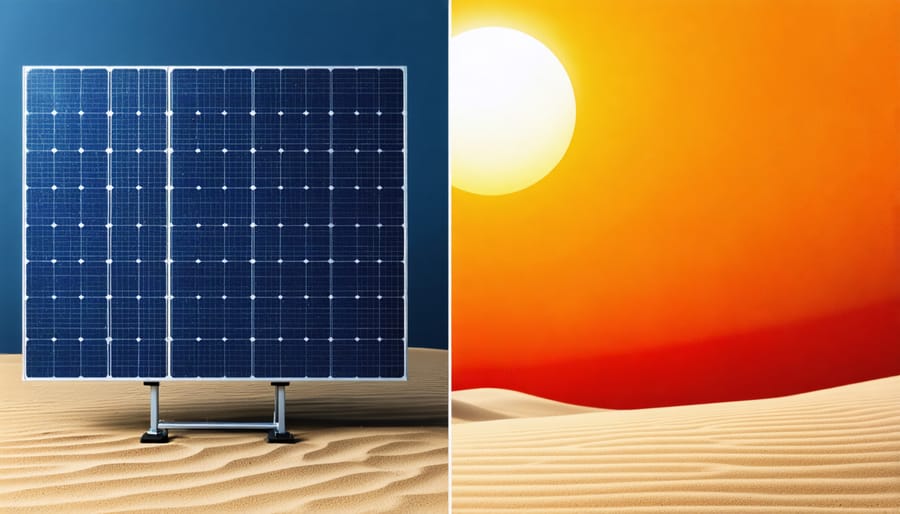
Smart Cooling Systems
Desert environments pose unique cooling challenges, but innovative smart cooling systems are making it easier than ever to maintain optimal temperatures while minimizing energy consumption. These solutions combine ancient wisdom with modern technology to create efficient, sustainable cooling methods.
One popular approach is the hybrid cooling system, which integrates evaporative cooling with traditional air conditioning. This smart combination automatically switches between cooling methods based on humidity levels, maximizing efficiency while reducing energy costs by up to 40%.
Solar-powered absorption chillers represent another breakthrough in desert cooling. These systems use solar thermal energy to power the cooling process, making them particularly effective in arid regions where sunshine is abundant. They work by converting heat into cooling power, providing reliable air conditioning without straining the electrical grid.
Smart ventilation systems with heat recovery are also gaining traction. These systems use sensors to monitor indoor and outdoor temperatures, automatically adjusting airflow to take advantage of cooler nighttime temperatures – a natural phenomenon in desert regions. When combined with thermal mass materials, these systems can store coolness overnight and release it during hot daytime hours.
Advanced misting systems have evolved beyond simple sprayers. Modern versions use high-pressure pumps and microscopic nozzles to create ultra-fine water particles that evaporate instantly, cooling the air without creating unwanted humidity. These systems are particularly effective for outdoor spaces and can reduce ambient temperatures by up to 20 degrees Fahrenheit while using minimal water.
Maintenance Solutions for Desert Solar Systems
Automated Cleaning Systems
Modern automated cleaning systems have revolutionized solar panel maintenance in arid regions. These innovative solutions use a combination of sensors, robotic brushes, and precision water sprayers to keep panels operating at peak efficiency without human intervention.
The systems typically operate during off-peak hours, using minimal water resources while maximizing cleaning effectiveness. Many models incorporate smart scheduling features that activate cleaning cycles based on dust accumulation levels and weather conditions. This intelligent approach ensures panels are cleaned only when necessary, conserving both water and energy.
A key advantage of automated systems is their ability to maintain consistent panel performance without the safety risks associated with manual cleaning. They can work quietly at night, using soft-bristle brushes and controlled water pressure to prevent panel damage while removing dust, sand, and other debris.
The return on investment is particularly attractive, as these systems can increase energy production by up to 30% in dusty environments while reducing water consumption by up to 90% compared to traditional cleaning methods. For homeowners, this means higher energy yields and lower maintenance costs over time.
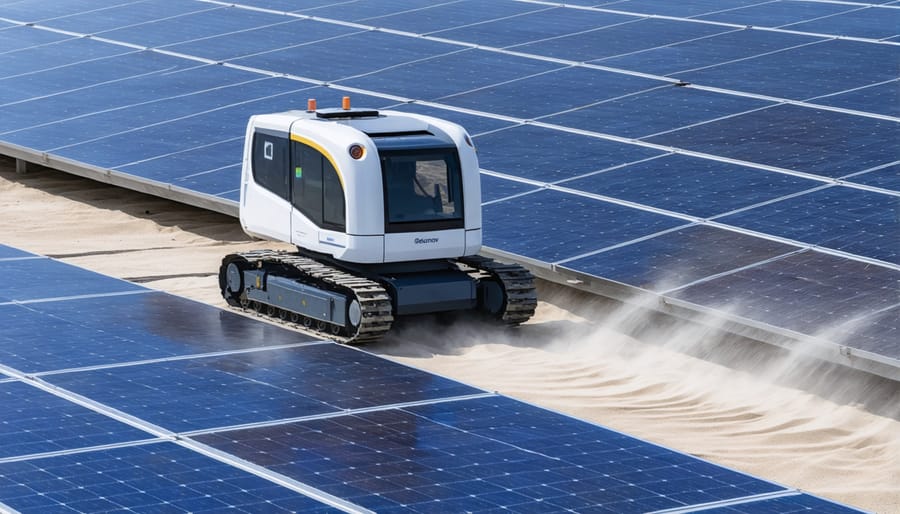
Protective Coatings and Treatments
Modern protective coatings have revolutionized solar panel maintenance in desert environments. These advanced treatments create an invisible shield that prevents sand, dust, and other particles from sticking to panel surfaces, maintaining optimal energy production.
Anti-soiling coatings use nano-technology to create a super-smooth surface that makes it difficult for dust to settle and easier for wind to naturally clean the panels. These treatments typically last 3-5 years and can reduce cleaning frequency by up to 50%.
Self-cleaning glass treatments are another popular option, using a hydrophobic formula that repels both water and dust. When it rains, water beads up and rolls off the surface, taking accumulated dirt with it. This technology is particularly effective in areas that experience occasional rainfall.
For extreme desert conditions, some manufacturers offer specialized ceramic coatings that provide additional protection against sandstorms and intense heat. These coatings not only guard against abrasion but also help regulate panel temperature, potentially improving efficiency by up to 3%.
While these treatments represent an additional upfront cost, they often pay for themselves through reduced maintenance needs and improved panel performance.
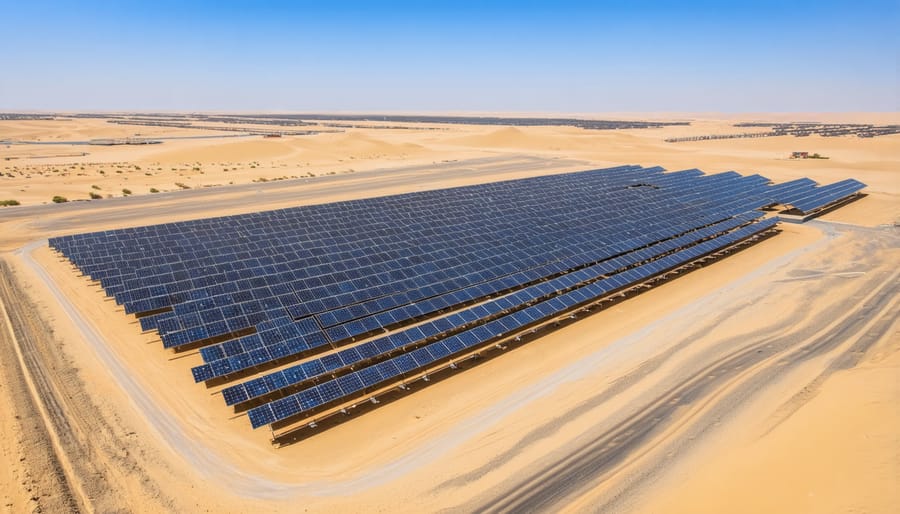
Real-World Success Stories
The success of arid solutions in solar installations is best demonstrated through real-world examples that continue to inspire homeowners across desert regions. In Phoenix, Arizona, the Smith family installed a specialized solar array with anti-soiling coating and automated cleaning systems in 2019. Their system has maintained 95% efficiency despite dusty conditions, resulting in a 40% reduction in their annual energy bills while using 70% less water for maintenance compared to traditional panels.
In Nevada’s Mojave Desert, the Desert Sun Community Project showcases how intelligent tracking systems and heat-resistant components can maximize solar production. This 50-home development implemented bifacial panels with enhanced cooling systems, achieving an impressive 30% higher energy yield than conventional installations in similar conditions.
A particularly notable success story comes from Dubai, where the Al-Maktoum Solar Park utilizes advanced dust mitigation technology and smart cooling solutions. The residential section of this project demonstrates how homeowners can benefit from commercial-grade solutions scaled for domestic use. Participating households report consistent performance even during intense sandstorms, with panel efficiency dropping by only 3-5% compared to the typical 15-20% degradation seen in standard installations.
In Palm Springs, California, a retirement community’s solar initiative proves that age-friendly maintenance solutions can work effectively in harsh environments. Their installation features easily accessible cleaning systems and heat-dissipating design elements, resulting in a sustainable 98% performance rate throughout the year while requiring minimal homeowner intervention.
These success stories demonstrate that with the right combination of technologies and maintenance approaches, solar power can thrive even in the most challenging desert environments.
Desert solar solutions offer a powerful combination of environmental responsibility and financial benefits for homeowners in arid regions. By implementing specialized equipment and technologies designed for high-temperature environments, you can maximize your solar investment while contributing to a more sustainable future. These solutions not only help you reduce your carbon footprint but also provide significant savings on your energy bills throughout the year.
Taking the next step toward solar power in your desert home is straightforward. Start by conducting a thorough site assessment to understand your property’s solar potential. Research qualified local installers who specialize in desert installations and have experience with heat-resistant equipment. Consider scheduling consultations with multiple providers to compare options and ensure you’re getting the best value for your investment.
Remember to explore available tax incentives and rebates in your area, as these can substantially reduce your initial costs. With proper planning and implementation, your desert solar system can provide reliable, clean energy for decades to come, making it a smart choice for both your wallet and the planet.
Don’t let the challenging desert environment deter you from embracing solar power. Modern solutions have been specifically engineered to thrive in these conditions, offering you a practical path to energy independence.

